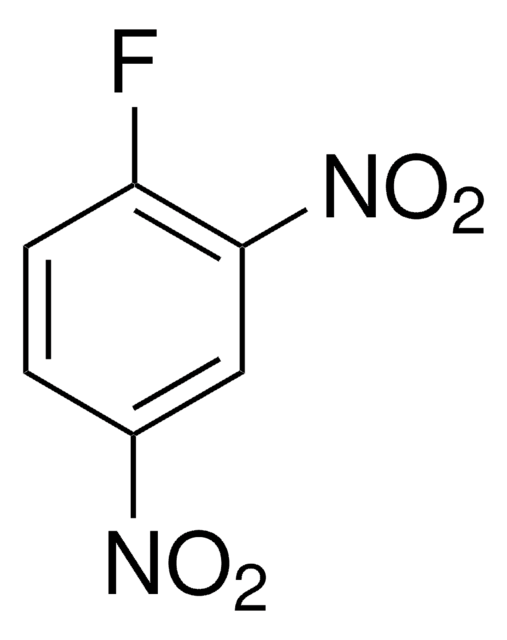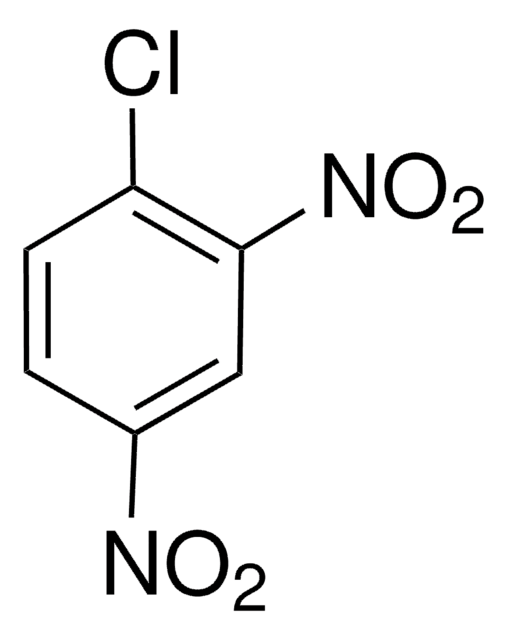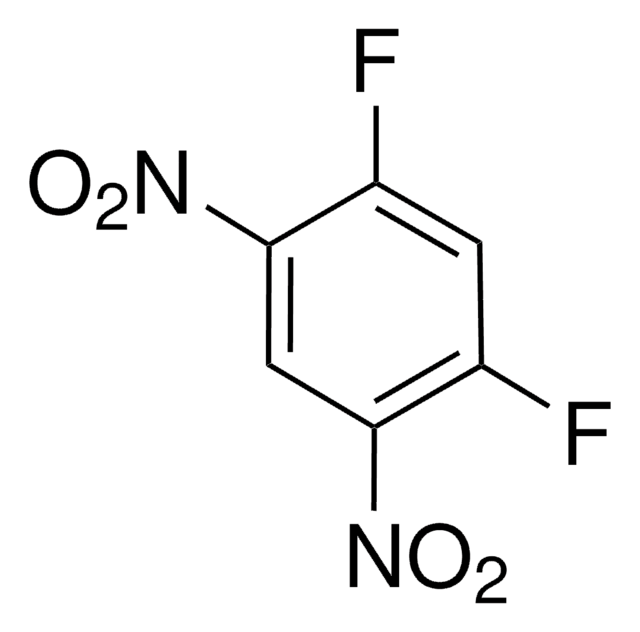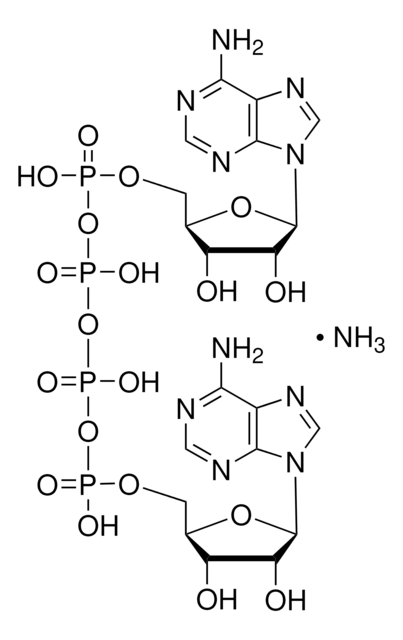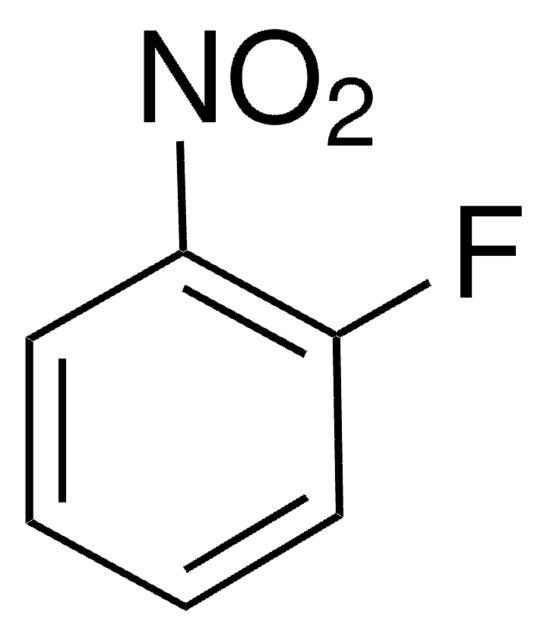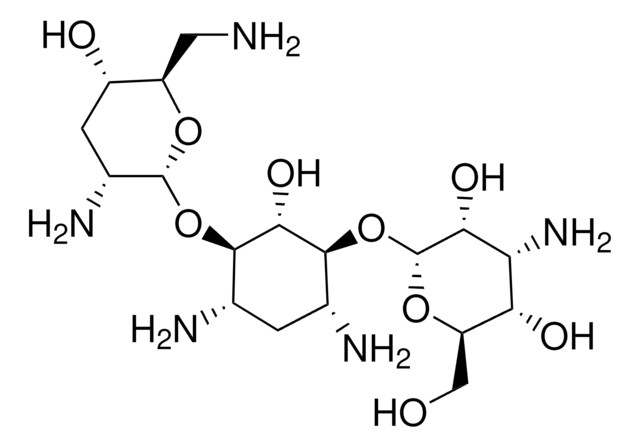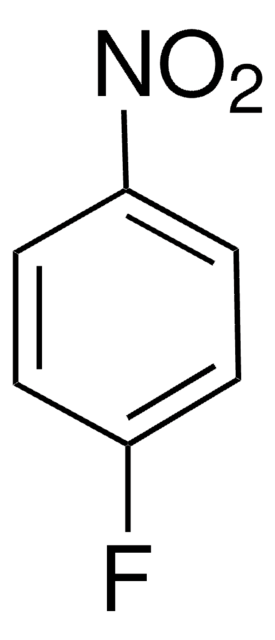推薦產品
一般說明
1-氟-2,4-二硝基苯(DNFB)是修饰蛋白和多肽N端氨基酸的试剂。DNFB通常也称为桑格(Sanger′s)试剂,以Frederick Sanger的名字命名,他在1945年的一篇经典的论文中报道了使用DNFB对蛋白和多肽的N末端进行特异性衍生的过程。
應用
1-氟-2,4-二硝基苯用于诱发小鼠严重接触性超敏反应,通过体内成像方法,检测基因表达和诱发慢性瘙痒,用作分析搔痒行为的模型。
生化/生理作用
1-氟-2,4-二硝基苯是一种接触过敏性半抗原,通常用于实验研究接触超敏反应,诱发瘙痒模型和特应性皮炎。肥大细胞激活是DNFB诱发过敏的关键步骤。DNFB和蛋白质N端氨基酸共价连接,可用于桑格(Sanger )测序。
訊號詞
Warning
危險分類
Acute Tox. 4 Oral - Eye Irrit. 2 - Skin Irrit. 2 - Skin Sens. 1 - STOT RE 2 - STOT SE 3
標靶器官
Respiratory system
儲存類別代碼
10 - Combustible liquids
水污染物質分類(WGK)
WGK 3
閃點(°F)
327.2 °F
閃點(°C)
164 °C
個人防護裝備
dust mask type N95 (US), Eyeshields, Faceshields, Gloves
客戶也查看了
Imaging protective mast cells in living mice during severe contact hypersensitivity
Reber LL, et al.
JCI insight, 2(9), e92900-e92900 (2017)
Microbial Genetics (2014)
Bamboo salt suppresses skin inflammation in mice with 2, 4-dinitrofluorobenzene-induced atopic dermatitis
Yoou MS, et al.
Chinese Journal of Natural Medicines, 16(2), 97-104 (2018)
Tac1-Expressing Neurons in the Periaqueductal Gray Facilitate the Itch-Scratching Cycle via Descending Regulation
Gao ZR, et al.
Neuron, 101(9), 45-59 (2018)
Beatrice Parma et al.
Journal of experimental & clinical cancer research : CR, 40(1), 248-248 (2021-08-09)
The identification of novel targets is of paramount importance to develop more effective drugs and improve the treatment of non-small cell lung cancer (NSCLC), the leading cause of cancer-related deaths worldwide. Since cells alter their metabolic rewiring during tumorigenesis and
我們的科學家團隊在所有研究領域都有豐富的經驗,包括生命科學、材料科學、化學合成、色譜、分析等.
聯絡技術服務